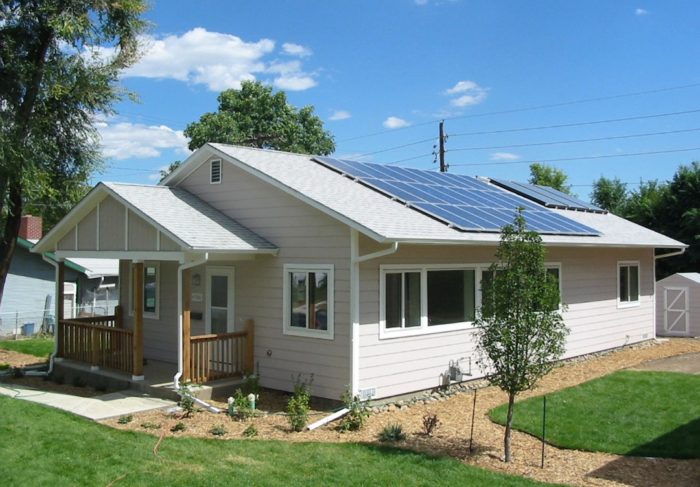
Image Credit: Amy Glickson for NREL
By JEAN CARROON
Why would we want an individual building to be its own energy plant? This has never made sense to me. The scale seems inefficient and the potential of many existing urban buildings for net-zero energy (NZE) is limited. But many people I admire seem besotted by NZE. What am I missing?
To avoiding sounding as naïve and uninformed as I really am, I did some research, which was limited by time and my own ability to understand the issues. What I found substantiated some of my concerns, but definitely broadened my perspective. I concluded that NZE is appealing exactly because of its scale. It is an avenue to improving building performance that is accessible to individual building teams. It is aspirational and raises the bar for design and construction while delivering bragging rights.
However, I am still left with questions and challenges.
Storage
I have seen the swooping graphs of energy use spread over a year in NZE buildings, which often show many months of using the surplus energy from other months. If all buildings in an area are on the same curve, aren’t we asking either buildings or utility companies to have giant storage capacity? Are storage systems capable of meeting this need on a large scale, and are these systems good for the environment?
A Rocky Mountain Institute study from 2015 partially answered these questions. Researchers examined the value and location of batteries on the electrical grid and found that behind-the-meter storage provided the largest number of services to the electricity grid at large.
The 2016 BuildingEnergy Boston Conference + Trade Show featured two sessions, “Lightning in a Bottle Parts I and II,” that addressed these challenges. Storage is both possible and valuable in our electric system, but few seem to be addressing the impact of batteries on the environment. Aren’t they material- and energy-intensive to produce? Don’t all batteries need to be disposed of at some point, and isn’t that a problem because of toxic metals? More questions. More worries.
Accounting
A NZE goal is accounting, pure and simple, and while it should begin with conservation and a high quality building, it doesn’t have to. Touted as the “Largest Net-Zero Energy Commercial Office Building in the U.S.,” the design of the all-glass La Jolla Commons targeted an unremarkable consumption level of 41.5 kBtu/ft2 and achieves NZE with directed biogas and on-site fuel cells.
It’s better than not being NZE, but not as good as actually making a less consumptive building. Teaming NZE with performance systems, like Passivhaus, Living Building Challenge, or even LEED, is important to ensure that the energy use intensity (EUI) has been reduced before renewable energy is added.
Carbon
NZE ignores full carbon/environmental impacts by focusing only on end-use energy. Focusing only on EUI still allows oversized, transportation-dependent buildings using lots of materials to be labeled “high performance.”
The data on what we are doing to the planet is sobering. Global extraction of raw materials has tripled since 1970, while global population has only doubled. The average material use per person grew from 6.4 tons to 10 tons between 1970 and 2010.
Not once in the last 40 years has materials extraction declined even during times of recession. Efficient use of materials is essential and our aspirational goals should include whole building/life-style carbon accounting to encourage reuse, to encourage building small, and and to encourage strategies that allow freedom from carbon-intensive transportation (including both construction and occupancy). We need to be confident that any carbon we spend to achieve a NZE goal has a reasonable environmental payback, which, I suggest is 10 to 20 years.
Efficiency
Is NZE the right scale if resource efficiency is the goal? Photovoltaic systems, wind turbines, and even hydroelectric power stations are more efficient and cost-effective at a larger scale than a single building.
“The Future of Solar Energy,” a 332- page report published by MIT in May 2015, celebrated the opportunities of solar energy while including a recommendation away from net-metering policies for distributed solar, finding that utility-scale solar rather than residential-scale is a more affordable pathway to meeting energy requirements. Needless to say, this is a controversial issue, but we must be rigorous in challenging our own biases and reaching for the best solutions for the built environment.
Maintainability
I question whether scattered renewables are as efficiently and effectively maintained as centralized systems. I didn’t find much discussion about this in my research, other than a few papers from the United Kingdom asking the same question.
Community interdependence
For me, NZE buildings harken back to the Autonomous Houses of the 1970s and the appealing, but regressive, idea of being “self-sufficient.” In Philip Slater’s 1970 book, The Pursuit of Loneliness, he said, “It is easy to produce examples of the many ways in which Americans attempt to minimize, circumvent, or deny the interdependence upon which all human societies are based. We seek a private house, a private laundry, self-service stores and do-it-yourself skills of every kind.”
Stewart Brand was more succinct. Commenting on self-sufficiency in The Co-Evolution Quarterly in 1975, he said: “It is a damn lie.”
A better benchmark
This all leads to my final conclusions and questions. Not every existing or new building in an urban setting is going to lend itself to NZE. What happens when new buildings, which may improve a community, shade an existing solar system essential to an NZE building? Rather than focus on individual building NZE, shouldn’t we be considering individual building performance, before renewables, as a higher benchmark?
I like the idea, found in a 2012 paper by Nick Grant of Elemental Solutions, that proposed energy demand targets be set for all buildings, new and old, independently of any renewables that may be purchasable or located on site. Even though this system doesn’t address carbon accounting, wouldn’t it instill higher overall performance in our building stock than a NZE moniker?
If we conclude, as we seem to, that we don’t need to worry about the environmental impact of batteries or the efficiency of small-scale renewables, then let’s focus more aggressively on NZE communities instead of NZE buildings. NZE communities aren’t a new idea — ecodistricts have been around for almost a decade — but the idea seems to be gaining traction and publicity.
In March 2016, the Cambridge, Mass., “Getting to Net Zero Action Plan” was presented at the BuildingEnergy Boston Conference + Trade Show. The Architecture 2030 Challenge and The Living Future Institute now have 2030 Districts and a Living Community Challenge respectively, which imagine sharing resources from building to building.
I was heartened to find a 2016 paper from the American Council for an Energy-Efficient Economy (ACEEE) about zero energy at scale. It calls out numerous initiatives happening at the local, campus and development levels and proposes a framework — CITI2zero (Community-Scale Integrative & Transformative Infrastructure for Zero Energy).
The Citi2Zero framework proposes five components:
- People — to influence policy, behavior, and investment.
- Renewable Infrastructure — to optimize the grid and integrate storage, charging, controls, and distribution.
- Buildings — combining new and old to have a combined NZE.
- District Fabric — integration of infrastructure informed by land planning and urban design.
- Finance — at every level, to maximize economics and financing efficiency.
This is a framework I can heartily support, although I will still harangue about moving beyond EUI in our building evaluations.
I conclude that, like many green systems or goals, a NZE building is an incomplete and even simplistic metric at the wrong scale. However, it may contribute to integrated design solutions and a better overall building. I certainly understand the appeal and celebration of achievement on an individual project level. Although I am still not sitting on the NZE building bandwagon, I am waving more enthusiastically to my friends and mentors who are.
Jean Carroon is one of five principals at the design firm Goody Clancy. This column was originally published in the Spring 2017 issue of BuildingEnergy
, a publication of the Northeast Sustainable Energy Association.
Weekly Newsletter
Get building science and energy efficiency advice, plus special offers, in your inbox.




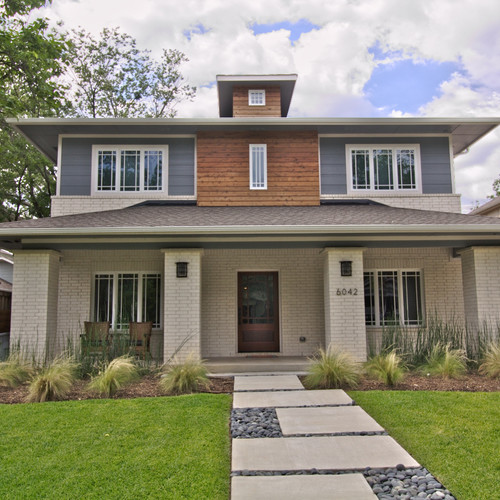
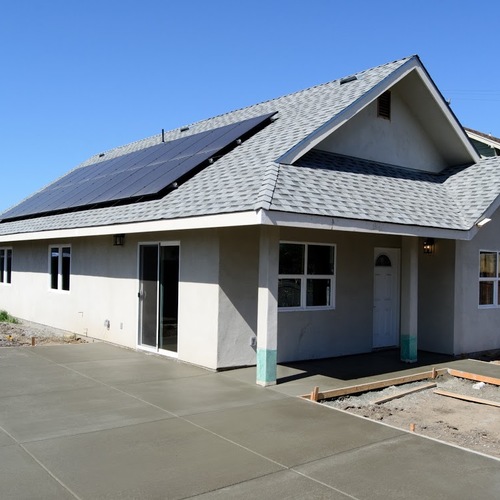
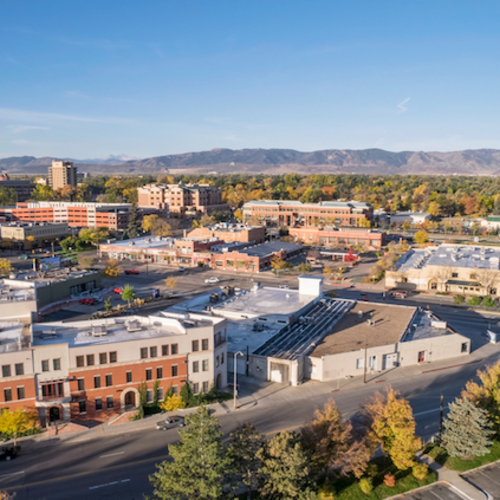
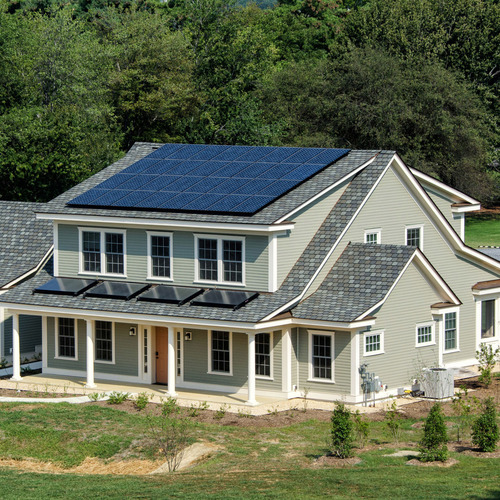






23 Comments
Off grid?
I think this is an interesting conversation to have, but I would argue that being off-grid (as in off of the electric grid) does not necesarily imply some sort of lonely hermit type of life any more than wireless phones, as opposed to land-line telephones, imply the same. It seems to me, especially with a new development, that site development costs for grid tie in may soon be outweighed by PV/battery systems. A home with a PV/battery system could still be an integral part of a community in many other ways.
Net Zero is not Off Grid
Net Zero is not the same as Off Grid.
Off Grid has definitive positive attributes, primarily resilience from external utility problems.
I will never understand the inherent attraction of Net Zero, other than that it sounds good.
Thanks for the Provocations Jean
Back at the 2007 Building Energy Conference Bill McKibben took part in a panel discussion on Wind in which he said, "In the best of all possible worlds, we wouldn’t put turbines in these places, but unfortunately we are no longer dealing with the best of all possible worlds." And that was a decade ago! He went on to remind us that for the challenges we face, there would be no silver bullet, what we need is "silver buckshot!"
So yes, by all means let's do all we can to develop net zero communities, and for many of the reasons you implore us to pay attention to. But to my mind, we need be pursuing both scales (and asking the deeper questions about materials, etc. that Net Zero stops short of).
Nearly every session I attended at this year's Building Energy Conference reminded us that we are driven to act as much emotionally as we are rationally. Just as "farm to table" seems to ignite some awareness that what we eat has a relationship to where we live "Net Zero" speaks to our desire to have some agency in responding to problems that we might otherwise have to sit on the sidelines and wait hopefully to come about.
My other observation is that "Net Zero" moved the goalposts in terms of the standard of home performance many now recognize could become standard practice. Harvesting energy from rooftops illuminates just how precious energy is as we come to terms with the design imperatives of achieving an energy balance aligned with that resource. Additionally, it invites us to consider "what's enough" as many Net Zero projects respond by producing smaller buildings.
Always good to rock our boat and question what risks becoming dogma. Thanks for that Jean!
Your asking too much
Your asking too much from net zero, its a simple concept, all electricity used in a year is generated on site.
You want it to mean recycling, grid balance, sustainability, zero carbon, durability and climate change mitigation. It is not a concept that covers these, it would be like asking seatbelts to prevent rust.
Think globally, act locally
As an individual, I can't solve all of the world's problems. But I can, perhaps, be part of the solution. Installing PV on my roof is a step in the right direction.
Of course, once the PV is installed, we can't abandon our commitment to addressing the climate change challenge.
We still have to write letters to our elected representatives, join protest marches, choose our transportation modes wisely, and resist the actions of climate change deniers. Each of these actions is important.
-- Martin Holladay
Net Zero as a goal, like
Net Zero as a goal, like Passive House, puts all the focus on operating energy. For the most part, both standards ignore the front-loaded carbon footprint of initial construction. They also ignore the carbon footprint of transportation to and from the building, though more and more net-zero homes are adding enough PV to charge a car as well as offset the energy required to run the house.
The fact that a new building's carbon footprint is front-loaded is relevant mostly because we only have a couple of decades to figure out how to manage our carbon emissions. How much does it help that a new building has low operating carbon if a large percentage of its lifecycle carbon is emitted now, when it most matters? I don't know the answer, but I worry that it might be "not much."
The tunnel vision caused by the near-exclusive focus on operating energy allows us to think that a vacation home we build on a previously undeveloped lot and located 25 miles from the nearest transportation hub, if built to the Net Zero or Passive House standard, is a noteworthy achievement. In fact, it's an environmental liability.
But we don't give awards or certifications or bragging rights for not building things. Maybe we should. We could call it LEED-Wildflower (to get away from precious metals that cause environmental damage to mine), and it would be the top tier certification.
In the end, how much square footage of built space per person do we really need -- no matter what its energy performance?
Response to Paul Eldrenkamp
Paul,
Thanks for your comments. Here at GBA, we've published several articles on embodied energy. (For example, see All About Embodied Energy.)
A couple of weeks ago, I reported on Ann Edminster's recent keynote address at an energy-efficiency conference in Burlington, Vermont. Like you, Ann is worried about the front-loading problem. She said, “We need to consider the time value of the CO2 emissions associated with construction. Embodied CO2 emissions happen when the building is built. It is a front-end load, and we need to be attentive to that front-end load. Maybe we need to build fewer new buildings.” (You can read more on her address here: Zero-Energy Construction is ‘Set to Explode’.)
-- Martin Holladay
blowing my cover
Martin,
Much of my career has been based on repeating other people's ideas as if they were original, and my own. You're blowing my cover.
My primary defense these days is that it has more to do with failing memory than plagiarism.
--Paul
A few thoughts on NZE
Hi Jean,
I agree with Alan -- the concept of NZE has gained traction because it is very simple. The public probably gives too much credit to NZE projects, ignoring the concept of embodied energy as well as the "raw materials" problem of solar. However, I'm not ready to abandon distributed solar, because efficiency has some issues as well. For example, there are also some known health and environmental issues presented by various types of foam insulation, which are regularly used in home energy retrofits.
The gist of your post, as I understand it, is that NZE doesn't mean much without an efficiency component. I would argue that we can't lump all NZE projects into one pile. Climate zones play a huge role in determining the feasibility and approach of achieving NZE. For example, the measures required to achieve NZE in moderate climates, like southern California, are different than those required in cold climates, like the northeast. With relatively few heating and cooling days, coupled with plentiful sun, southern California homeowners can get away with investing heavily in solar without addressing building envelope or heating systems. In Maine, however, the NZE formula requires more efficiency measures, as heating and cooling represent a much larger slice of the energy consumption pie. In addition to solar having a longer payoff period in Maine (20+ years), there often isn't enough sun or roof space to go NZE without aggressively addressing efficiency first.
Beyond climate zones, we also need to consider other available sources of energy when evaluating NZE projects. For example, does it make sense to invest in rooftop solar when wind energy is available? How about when the alternative is coal?
Finally, I think there are some real benefits associated with distributed energy. As microgrid and fractalgrid technologies evolve, we will have few power outages, will be able to shave down peak demand through battery storage, and will have more autonomy over types of energy production.
-- Johnny
Response to Paul Eldrenkamp
Paul,
I wasn't trying to hint that you're a plagiarist -- just pointing readers to related articles. Your points are important ones. Keep commenting!
-- Martin Holladay
To Martin regarding "Think Globally....."
I have no doubt that you supported the "protesters" of the Dakota pipeline that were actually garbage that walks around on two legs, the hypocritical human trash that largely in the name of "protest" to "protect the environment" left behind them an environmental disgrace. These hypocrites went home to their houses heated by natural gas, after costing taxpayers millions of dollars in clean up costs--this AFTER the pipeline was about 98% finished and had cleared all the numerous regulatory obstacles. Time after time after time, liberals have been proven to be disgusting hypocrites.
@ Martin
Didn't you once say something like we should give a certificate each year to anyone who does not build a new house because thats the most eco friendly building practice possible (i'm paraphrasing)
Response to Alan B
Alan,
Q. "Didn't you once say something like we should give a certificate each year to anyone who does not build a new house because that's the most eco-friendly building practice possible?"
A. I'm not sure, but I might have. I do remember this: In my very first blog for GBA (published on Jan. 12, 2009), I wrote, "Here’s my advice to anyone thinking of building a new green home: The best approach is not to build. Since the number of people per household in the U.S. has been dropping for years, a strong argument can be made to support the proposition that the U.S. already has too many houses."
-- Martin Holladay
Sonny
Why do you bother coming here very few months and posting sneering comments, no matter what the subject matter? Can't you find a more productive activity to pursue?
Does NZE include?
When referring to a home as NZE are we including just electrical usage, or are we including nat gas/propane?
Response to Kye Ford
Kye,
These days, most net-zero-energy homes are all-electric. If you have a home that uses natural gas, propane, or firewood, you couldn't call it a net-zero home unless the renewable energy system produced more electricity on an annual basis than the home used. You would need to show that the surplus electricity had the energy equivalent of the burned fuel.
-- Martin Holladay
Distributed Energy as Future
As has already been mentioned, I think NZE is a catchphrase that is something simple for the public to grab onto. Having said that, while I don't recall the author's name, "There are no NZE buildings. There are only NZE people." I remember someone once commenting that tankless water heaters wouldn't save money because they would encourage people to take longer showers. If your current process is to shower until the hot water runs out, then no, that's not going to work.
I also agree that NZE is not the first place to look. Before we concern ourselves with how much energy we can generate for a given building, community, city, nation or planet (and we only have one of those), the first question should be oriented toward how much can we do without? LED lighting, better insulation, window upgrades, etc, etc. should all be ahead of how many solar panels we need to put on the roof.
The other discussion here is about grid supply and demand. We're currently working with an energy model that is over a century old and it no longer fits us. Maybe it never did. People today (in most places at least) have grown accustomed to flicking a switch and having the lights come on. They have no idea where it came from, where it goes from there, where it lives until they need it... nothing. It's just there. Until it isn't. Our current energy model is based on an idea of having one (or several) central power plants that feed the users around them. Yes, that's over simplified, but the bottom line is that these power plants are constantly in operation, 24/7. It's up to the managers of these plants to determine/predict the amount of energy that's likely to be required and how much to push up or pull down the energy output, but in essence it's like having a number of shared vehicles either being driven by someone or idling until someone does need it. The engine is never shut off. Another example would be a faucet that is never shut off. If there's a container under the faucet, the container gets filled. A big container means the faucet is on more fully. Once the container is removed the excess water pours down the drain. If supply is greater than demand then that excess energy is essentially wasted. If demand is greater than supply, then we have brownouts or blackouts and we need to increase production. Somehow.
One of the greatest (false) criticisms regarding distributed energy is that it will destabilize the energy grid. Actually the reverse is true. In some states, like California they're looking at distributed energy to STABILIZE the energy grid, to add extra power when it's needed. In New York they're beginning to add value to the question of where energy supply is in relation to demand.
But power generation is only one half of the equation. It doesn't matter whether the electricity comes from coal, nuclear, diesel, natural gas, solar, wind, tidal power or whatever. It travels from the point of production down the power lines at 186320 miles/second looking for a user. If it doesn't have one, it goes to ground. Energy storage is the other big factor here, and this is happening at both local and regional levels. Imagine if our imaginary faucet above could be used to fill a storage tank instead of being poured down the drain, and if there's a high demand for water, the water in the tank could be used to augment the water coming from the tap. Imagine if we could turn the faucet off, even for a little while. There are various systems being looked at, from enormous flywheels to pumped water to aluminum salts to batteries. The latter is the most public lately, especially in light of the Tesla Powerwall. In a grid-tied system, enough of these (and larger regional systems) become like the internet, where instead of one central power generation plant we have a thousand, a million or more of them. Jean asked, "Aren’t they material- and energy-intensive to produce? Don’t all batteries need to be disposed of at some point, and isn’t that a problem because of toxic metals?" The short answer is no. Most do, but there's one exception at this point. Aquion Energy has a Cradle-to-Cradle certified battery that runs on saltwater. More here: http://aquionenergy.com/ That's the first, but it certainly won't be the last. I'm old enough to remember when the first basic pocket calculators cost $200. For the most part they don't exist anymore. You have a calculator app on your phone instead. Before they disappeared they were being given away for free as promotional materials. (I still have a calculator - solar powered - and a slide rule, but that's a whole other topic).
As humans we've created more than our share of problems over the millenia, but we're also pretty darn good at solving them.
Mike.
Response to Martin Holladay
If people really want to be serious about global warming, they have to quit burning wood to heat a house.
Aaron
The effects of wood heat can be pretty dependant on local conditions. I live in a region where the main industry is forestry. The wood used for residential heating comes from the slash left on cut blocks after harvesting. Anything that is not taken during the first year or so is gathered into piles and burned before the area is replanted, so the wood is burned one way or another. I guess we could buy cords of wood and bury it to sequester the carbon as green gesture and then heat with mini splits instead. I'll ask around to see if anyone is interested.
Response to Aaron Gatzke
Aaron,
You're right, of course, that "If people really want to be serious about global warming, they have to quit burning wood to heat a house." They should also stop using cars, unless it's an electric car charged by carbon-neutral means. Although these statements are true, most of us fail to achieve that Platonic ideal. Most of us end up with ethical compromises.
My wood comes from the family land (30 acres) around my house. We have managed the land carefully for the last 43 years; during that time, the biomass on our land has increased tremendously. While I cut a few cords of wood each year, the trees on our land are healthier, taller, and of larger diameter than they were 43 years ago -- and they are dramatically healthier, taller, and of larger diameter than the trees on adjacent properties. At least two of these properties have been heavily logged (using feller-bunchers, bulldozers, and skidders) twice since we bought the land.
Can our family take credit for the carbon storage provided by our 30 acres -- and the fact that we haven't sold our trees to loggers twice over the past four decades? Not really; for that I give credit the Almighty, or Nature, or Gaia -- use what word your prefer. But our carbon balance sheet (when it comes to firewood) is pretty good.
-- Martin Holladay
What are you missing? The
What are you missing? The payoff.
A standard house + solar panel will generate a profit while a passive house + no solar panel for the same price will generate a utilities bill.
to Martin
"Here’s my advice to anyone thinking of building a new green home: The best approach is not to build. Since the number of people per household in the U.S. has been dropping for years, a strong argument can be made to support the proposition that the U.S. already has too many houses."
Martin unfortunately that argument doesn't make much sense....while # of people per household from 2000 to 2010 decreased from 2.59 to 2.58 according to the US Census, the # of households has increased by 11 Million!!! And population increased by 27 Million...
https://www.census.gov/prod/cen2010/briefs/c2010br-14.pdf
Response to N/A N/A
First of all, let me immediately concede your point: As the population increases and the number of people per household drops, there will be an increased demand for new homes, and there's nothing I can do to slow that trend.
And even if I tell GBA readers that families with spare bedrooms should take in boarders, nobody is going to listen to me.
You looked at 2000 to 2010. If we look at 1970 to 2013, we find that the average number of people per American household dropped from 3.1 to 2.5. If we go back farther, the statistics are even more stark: in Canada, the number of people per household dropped from 12 to 2.5 from 1851 to 2011. (See graph below.)
According to the 2010 census, there are 3,604,216 homes in the U.S. categorized as "vacation homes" or "second homes." Marxist revolutionaries (or green idealists) might imagine a future utopia where America had fewer homeless people and fewer vacation homes. Will this happen? I doubt it.
Homes are built for many reasons. Not every home is built because a a young family needs somewhere to live.
If the readers of GBA care about the environment and how we use the world's resources, some of them may think about these issues when they decide (a) whether to build a new vacation home, or (b) how many bedrooms to include in their new home, or (c) whether to build a new house on undeveloped land or to rehab an older building in an established neighborhood.
-- Martin Holladay
.
Log in or create an account to post a comment.
Sign up Log in